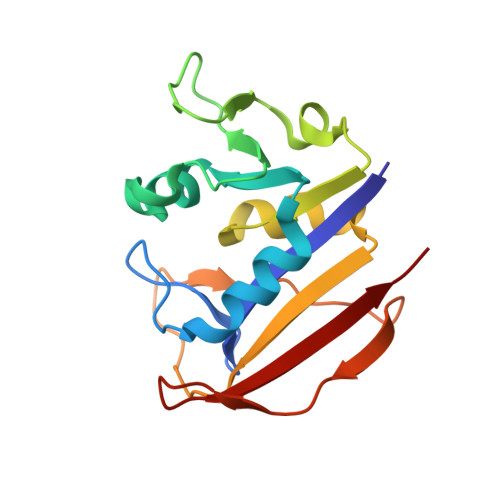Using a Fragment-Based Approach to Identify Alternative Chemical Scaffolds Targeting Dihydrofolate Reductase fromMycobacterium tuberculosis.
Ribeiro, J.A., Hammer, A., Libreros-Zuniga, G.A., Chavez-Pacheco, S.M., Tyrakis, P., de Oliveira, G.S., Kirkman, T., El Bakali, J., Rocco, S.A., Sforca, M.L., Parise-Filho, R., Coyne, A.G., Blundell, T.L., Abell, C., Dias, M.V.B.(2020) ACS Infect Dis 6: 2192-2201
- PubMed: 32603583
- DOI: https://doi.org/10.1021/acsinfecdis.0c00263
- Primary Citation of Related Structures:
6VS5, 6VS6, 6VS8, 6VS9, 6VSD, 6VSE, 6VSF, 6VSG, 6VV6, 6VV7, 6VV8, 6VV9, 6VVB - PubMed Abstract:
Dihydrofolate reductase (DHFR), a key enzyme involved in folate metabolism, is a widely explored target in the treatment of cancer, immune diseases, bacteria, and protozoa infections. Although several antifolates have proved successful in the treatment of infectious diseases, they have been underexplored to combat tuberculosis, despite the essentiality of M. tuberculosis DHFR (MtDHFR). Herein, we describe an integrated fragment-based drug discovery approach to target MtDHFR that has identified hits with scaffolds not yet explored in any previous drug design campaign for this enzyme. The application of a SAR by catalog strategy of an in house library for one of the identified fragments has led to a series of molecules that bind to MtDHFR with low micromolar affinities. Crystal structures of MtDHFR in complex with compounds of this series demonstrated a novel binding mode that considerably differs from other DHFR antifolates, thus opening perspectives for the development of relevant MtDHFR inhibitors.
Organizational Affiliation:
Department of Microbiology, Institute of Biomedical Science, University of São Paulo, Av. Prof. Lineu Prestes, 1474, São Paulo, SP 05508-000, Brazil.
















